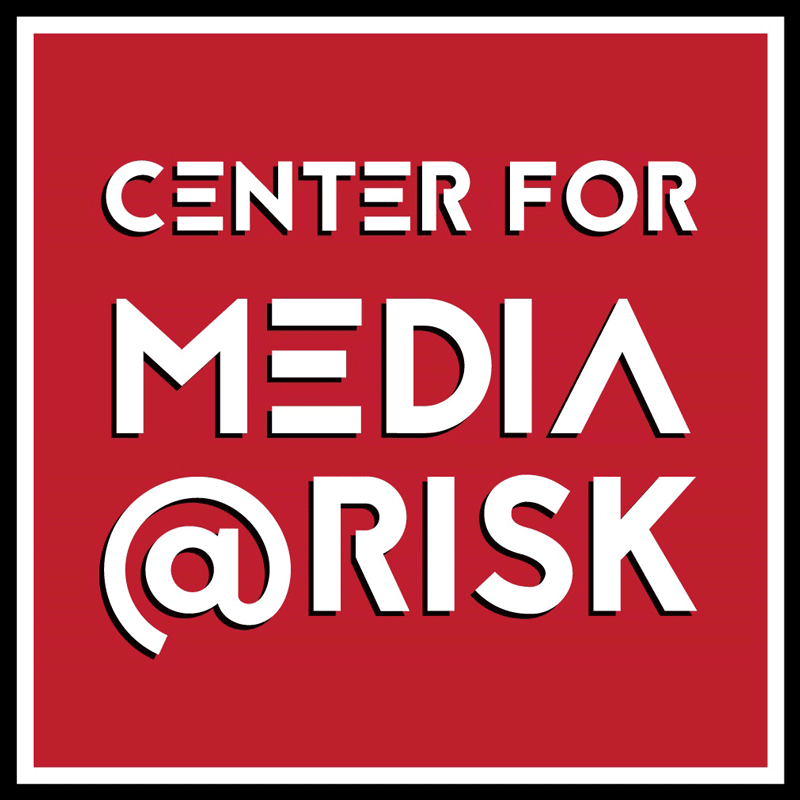On February 7 and 8, the Center for Media at Risk and MIT’s Global Media Technologies and Cultures Lab co-hosted a two-day “Securing MediaMakers Forum” at the Annenberg School for Communication at the University of Pennsylvania.
The event kicked off on Thursday evening with a full house screening of the documentary “The Feeling of Being Watched,” which investigated a decade of FBI surveillance in the Muslim-American community of Bridgeville, Illinois. The film was directed by Assia Boundaoui, an Algerian-American journalist and filmmaker, who grew up in the surveilled community. Following the screening, she participated in a Q&A with the audience, moderated by Center Postdoctoral Fellow Daniel Grinberg, where Boundaoui assessed her community’s collective trauma of experiencing surveillance and how bringing light to the surveillance helped to empower her community and herself.

 Assia Boundaoui,
Assia Boundaoui,
Filmmaker The Feeling of Being Watched Daniel Grinberg,
Daniel Grinberg,
Center Postdoctoral Fellow
The conversation continued on Friday morning with a panel addressing some of the issues that Boundaoui’s film raised. Dr. Lisa Parks of MIT’s Global Media Technologies and Cultures Lab introduced a star-studded panel which spoke about the myriad challenges facing media makers. The speakers included filmmaker Assia Boundaoui; Parker Higgins, Director of Special Projects at the Freedom of the Press Foundation; Senior Research Fellow at the Tow Center for Digital Journalism Sara Rafsky; and American University Professor Patricia Aufderheide. The panel was co-moderated by the Center for Media at Risk’s Director Dr. Barbie Zelizer and Dr. Lisa Parks.
Panelists argued for opening up the rigid parameters of standardized journalism to include artists and to replace the myth of objectivity, long held by journalists, with transparency and positionality.

The speakers highlighted the myriad and increasing risks that media makers—in all of their capacities—face, from verbal and physical attacks to digital surveillance and legal threats. The panelists argued that long-afforded protections and policies in the United States, such as First Amendment protections for journalists, are eroding in part because of increasing rhetorical and physical attacks on the media by government actors and their supporters. Rafsky said that Trump’s primary threats to the media in the United States are the undermining of norms and his constant barrage of rhetorical attacks against the media.
The panelists also identified surveillance as a specter that sought to silence voices. Boundaoui said that many people in her community felt like they were powerless against pervasive and long-standing FBI surveillance, but she tried to show how documenting surveillance and watching the watchers could help hold power to account and empower individual voices to push back.
 Barbie Zelizer,
Barbie Zelizer,
Director of the Center for Media at Risk Lisa Parks, MIT’s Global Media Technologies and Culture Lab
Lisa Parks, MIT’s Global Media Technologies and Culture Lab
To reveal this surveillance, Boundaoui used the courts and U.S. laws such as the Freedom of Information Act (FOIA) to prove that surveillance was happening in her community. Yet she argued that these tools are becoming bogged down because of insufficient infrastructure leading to an increase in secrecy that is a threat to journalistic practice. Meanwhile, news organizations engaged in investigative data journalism are concerned about the overzealous implementation of the Computer Fraud and Abuse Act, which they fear may be utilized against journalists who are scraping data from platforms to create stories for the public.
To counteract some of the threats and attacks that are occurring through digital infrastructure and legal regimes, journalists and documentarian filmmakers are beginning to show interest in and are adopting information security tools to better protect their communications, their data, and their sources. Yet these tools and practices continue to face challenges, including lack of usability, deadline pressures and lack of source knowledge of such tools. And even if journalists are good at communicating securely, it does not mean that their editors are. Dr. Aufderheide talked about how journalists will communicate with sources on Signal and then their superior will send an email with sensitive information, breaking the chain of security.
 Patricia Aufderheide, American University
Patricia Aufderheide, American University
- Sara Rafsky, Tow Center for Digital Journalism
 Parker Higgins, Freedom of the Press Foundation
Parker Higgins, Freedom of the Press Foundation
Despite these myriad challenges, the panelists agreed that media makers were becoming increasingly aware of the threats and attacks that they face in response to their work as well as ways in which to mitigate them.
This summary was written by Ph.D. Candidate Jennifer R. Henrichsen, member of the Center Steering Committee.

 Assia Boundaoui,
Assia Boundaoui, Daniel Grinberg,
Daniel Grinberg, Barbie Zelizer,
Barbie Zelizer, Lisa Parks, MIT’s Global Media Technologies and Culture Lab
Lisa Parks, MIT’s Global Media Technologies and Culture Lab Patricia Aufderheide, American University
Patricia Aufderheide, American University
 Parker Higgins, Freedom of the Press Foundation
Parker Higgins, Freedom of the Press Foundation